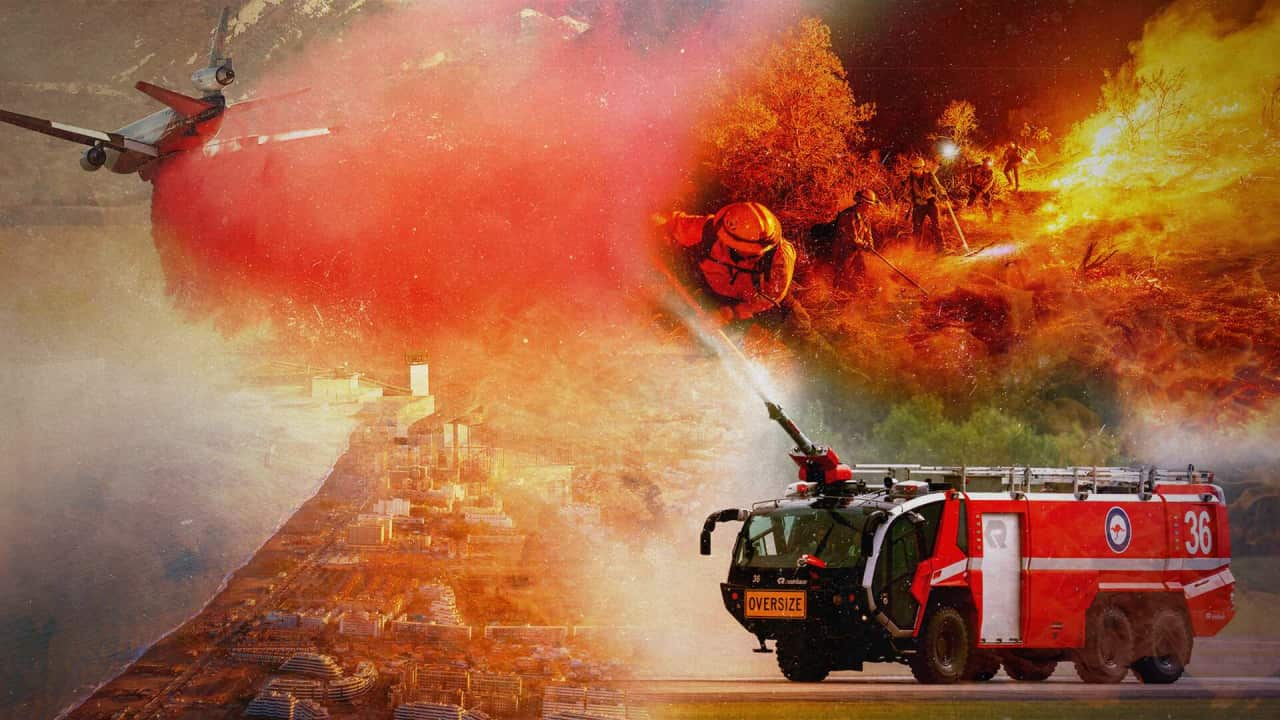Predicting fire risks in Australia is becoming a "whole new ball game" for experts, but trends in weather can provide an indication of the areas most at risk.
Recent weather anomalies, such as the Sudden Stratospheric Warming, could lead to warmer and drier conditions in parts of the country, prompting a reassessment of the bushfire risk.
Greg Mullins, founder of Emergency Leaders for Climate Action and former commissioner of Fire and Rescue NSW, said it's causing a shift in weather predictions.
"Our bushfire outlook for spring was actually for much wetter than normal [weather] and probably negligible fire risk, except in some parts of drought-affected South Australia and Victoria," he told the ABC's Radio National on Thursday morning.
"Now we're rewriting that, everybody's looking at it, going, well, how long is this going to last?"
Mullins said these conditions have only occurred twice before on record, and both times led to some of Australia's "worst ever fires".
In 2002, people in NSW went through a "really serious" fire season, and again in 2003, there was a "firestorm" in Canberra, when 500 buildings were destroyed and a number of people died.
"We could get quite serious bushfires this year, but nobody really knows. And this is one of the impacts of climate change … It's a whole new ball game," he said.
Global fire risks are increasing
Researchers from the University of Tasmania have been looking into the frequency and cost of "catastrophic wildfires" around the world.
Calum Cunningham from the University of Tasmania's Fire Centre, who is investigating changes to Australian fire regimes, told SBS News there has been a dramatic increase in devastating fires.
The study mapped 44 years of disaster data and found 43 per cent of the world's worst fires occurred in just the past decade.
"Mediterranean climates see some of the worst damage," he said.
"These are areas with a lot of valuable assets, and because of their locations and climate, where many people want to live."
Tourism in the line of fire
Some of the destinations most vulnerable to fire risk are also among Australians' favourite travel spots.
The study highlighted southern Europe, California, southern Australia and Chile as regions that have experienced some of the worst fires.
Climate concerns are also increasingly shaping travel choices.
A survey by the Tourism and Transport Forum found Australians aged 25 to 34 are the most likely to cite extreme temperatures as a concern for travelling.
Cunningham said Australia is high up on the list of global disaster hotspots, with Mediterranean and temperate forest regions both considered high risk.
Other areas with these temperate conifer regions include parts of western North America.
"These are climatic conditions that exist overseas and in Australia as well, so there is not only this global risk, but local danger as well," Cunningham said.
Cunningham said that while elevated fire risks are a global challenge, there are everyday changes that can help reduce the overall danger.
"It's easy to see climate change as this huge complex issue, but there are things Australians can do at home that will make a difference," he said.
Simple home improvements and land practices can make a big difference, such as ensuring a static water supply and cleaning out gutters and roofs.
Share



